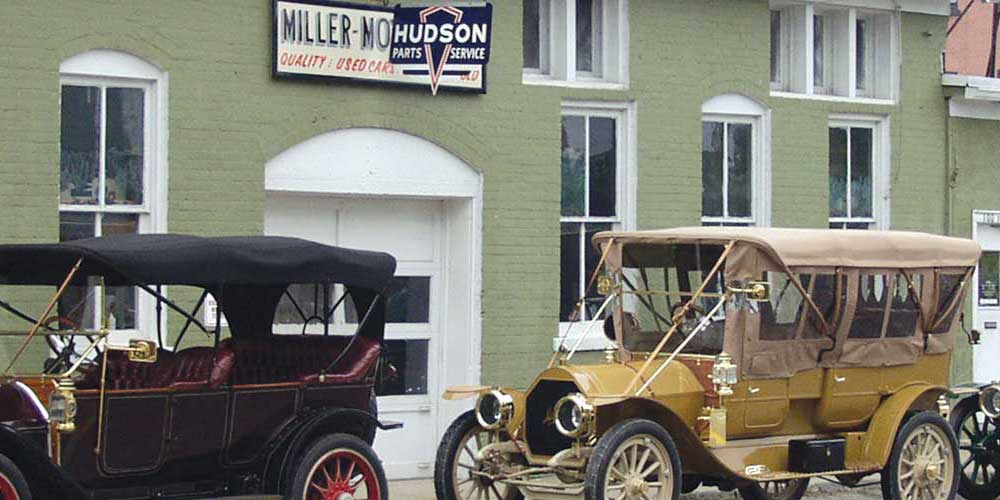By Robert Tate, Automotive Historian and Researcher
Images courtesy of the National Automotive History Collection
Posted: 09.10.2017
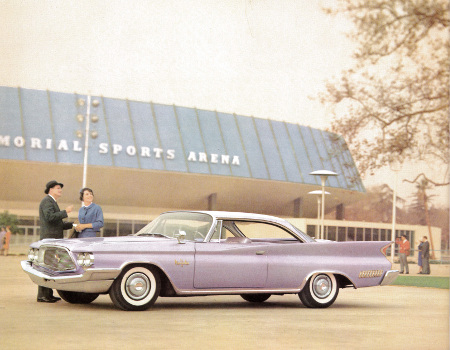 A 1960 Chrysler in lilac color; featuring new unibody construction.Starting with the 1960 models, the Chrysler - one of the domestic auto industry’s iconic Big Three - started offering a wide selection of model designs as well as best values for engineering and luxury features.
A 1960 Chrysler in lilac color; featuring new unibody construction.Starting with the 1960 models, the Chrysler - one of the domestic auto industry’s iconic Big Three - started offering a wide selection of model designs as well as best values for engineering and luxury features.
That year, Chrysler marketing executives coined the term “Pure Automobile” as a way to advertise the company’s unit-bodied construction - something that represented the latest in technology for auto manufacturing and assembly. The “Unibody” process was a great example of design efficiency at work. The production featured minimum weight with maximum strength, all packaged in a modern-looking silhouette body and frame as a single, solid unit. This was a wholesale removal from the process in which separate units were connected together by details. The result was at the time that vehicles were manufactured to ride quieter and built safer for the average consumer.
The 1960 Chrysler New Yorker models offered the consumer brand new styling along with their own dramatic, inset air scoop grille accented by a surging Golden Lion mascot. The New York models were a prime nexus of modern manufacturing technology and innovative styling. Models featured large canted fins and a great looking sculpted shape.
Not shown as a part of this article’s images, are the 1960 Chrysler 300 models which were extremely popular with the American motoring public. These great looking cars were significant because they were the first Chrysler models to offer unit-body construction.
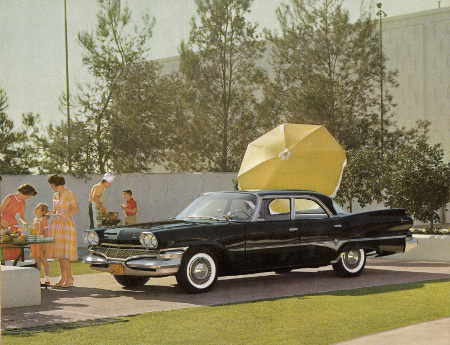 1960 DodgeThe 1960 Dodge Dart models were popular “sporty” cars and sold very well on the consumer market, largely due to its discounted price as compare to other Chrysler models for that year. The Dart Pioneer sedan also featured unit-body construction as well as Torsion-Aire Suspension.
1960 DodgeThe 1960 Dodge Dart models were popular “sporty” cars and sold very well on the consumer market, largely due to its discounted price as compare to other Chrysler models for that year. The Dart Pioneer sedan also featured unit-body construction as well as Torsion-Aire Suspension.
The Dart was manufactured in three series lines with a popular Slant 6, six-cylinder engine that was very popular among consumers for that great durability and comfort ride. The Dart offered three series in that represented 24 models. In an interesting sales boost for Chrysler that year, the Dodge Dart became a popular used for taxis in metropolitan downtown areas.
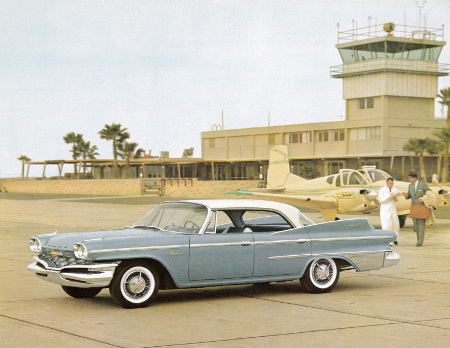 1960 Dodge MatadorThe Dodge Matador was a true love-hate model for motorists. The Matador was described as “Big, solid, built to command,” and came in two series. Unique styling features included high fins along with a high sweeping rear window. The models offered the consumer new automatic swivel seats in addition to new, interior comfort features such as finger tie weather controls and vacuum door locks. The seats would swing out to meet you automatically. Close the door it would returned to the driving position.
1960 Dodge MatadorThe Dodge Matador was a true love-hate model for motorists. The Matador was described as “Big, solid, built to command,” and came in two series. Unique styling features included high fins along with a high sweeping rear window. The models offered the consumer new automatic swivel seats in addition to new, interior comfort features such as finger tie weather controls and vacuum door locks. The seats would swing out to meet you automatically. Close the door it would returned to the driving position.
 1960 DeSotoThe 1960 DeSoto models offered new roominess and improved performance along with a added riding comfort and feel for the driver and passengers. At the time, the luxury-branded DeSoto models had set new standards in the automobile industry. Bold styling and engine improvements coupled with unibody, single-unit construction had provided the strongest bodies in DeSoto history.
1960 DeSotoThe 1960 DeSoto models offered new roominess and improved performance along with a added riding comfort and feel for the driver and passengers. At the time, the luxury-branded DeSoto models had set new standards in the automobile industry. Bold styling and engine improvements coupled with unibody, single-unit construction had provided the strongest bodies in DeSoto history.
DeSoto had streamlined its 1960 selection into three models avaialable in two series: the Fire Flite and the Adventure. Another popular feature on 1960 Chrysler models was the RCA Victor 45-RPM record player which was securely mounted under the instrument panel. The RCA company had designed and developed the in-vehicle record player exclusively for Chrysler. The Victor record player was capable of playing 14 standard 45-RPM records for up to two hours and it was factory installed.
The last two models featured in this article is the popular 1960 Plymouth and the Imperial LeBaron- Southhampton. The 1960 Plymouth models were coined as the “Solid Plymouth” and they offered the consumers a fresh styling with the new unit-body construction along with a great Torsion-Aire Ride. In 1960, a new body rust and corrosion preventative method was developed by Plymouth, Valiant and De Soto.
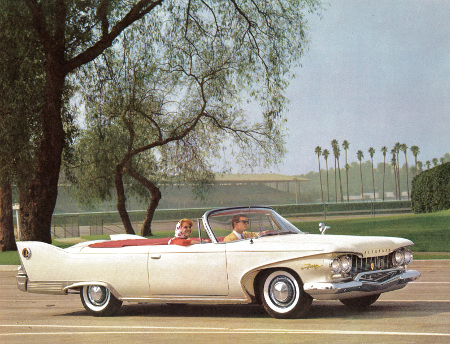 1960 PlymouthThe Plymouth convertible image featured here was offered only as a V-8 and with a price tag of $2,967. However, the most popular 1960 Plymouth model was the Savoy four-door sedan that sold for $ 2,429. The Savoy represented a revenue boost for Plymouth that year with the company selling over 50,000.
1960 PlymouthThe Plymouth convertible image featured here was offered only as a V-8 and with a price tag of $2,967. However, the most popular 1960 Plymouth model was the Savoy four-door sedan that sold for $ 2,429. The Savoy represented a revenue boost for Plymouth that year with the company selling over 50,000.
 1960 Chrysler ImperialThe 1960 Imperial LeBaron Southampton hardtop image that is a part of this story was a great looking automobile with a price tag of $6,318. Much of the consumer market, however, was priced out of this luxury vehicle with Chrysler selling fewer than 1,000. The models offered “gunsight” taillights that were very popular with some consumer in 1960. Chrysler marketing verbiage state, “The mighty Imperial engine has greater effective torque more wheel turning power than any other passenger car in the world.”
1960 Chrysler ImperialThe 1960 Imperial LeBaron Southampton hardtop image that is a part of this story was a great looking automobile with a price tag of $6,318. Much of the consumer market, however, was priced out of this luxury vehicle with Chrysler selling fewer than 1,000. The models offered “gunsight” taillights that were very popular with some consumer in 1960. Chrysler marketing verbiage state, “The mighty Imperial engine has greater effective torque more wheel turning power than any other passenger car in the world.”
In conclusion, many models and auto manufacturing was forever impacted with the arrival of unit-body construction. Those models such as the Chrysler line and the Plymouth Valiant represent a great piece of our automotive heritage.
For further information on photos please visit http://www.detroitpubliclibrary.org/ or email This email address is being protected from spambots. You need JavaScript enabled to view it.. Please do not republish the story and/or photographs without permission of MotorCities National Heritage Area. (Bibliography: Butler, Don. “The Plymouth-De Soto Story” Crestline publishing 1978; Flammang, M. James. “Chrysler Chronicle: An illustrated history of Chrysler De Soto Dodge Eagle Imperial Jeep Plymouth."
If you would like to contribute an article for the MotorCities newsletter, email This email address is being protected from spambots. You need JavaScript enabled to view it. or call 313-259-3425.


